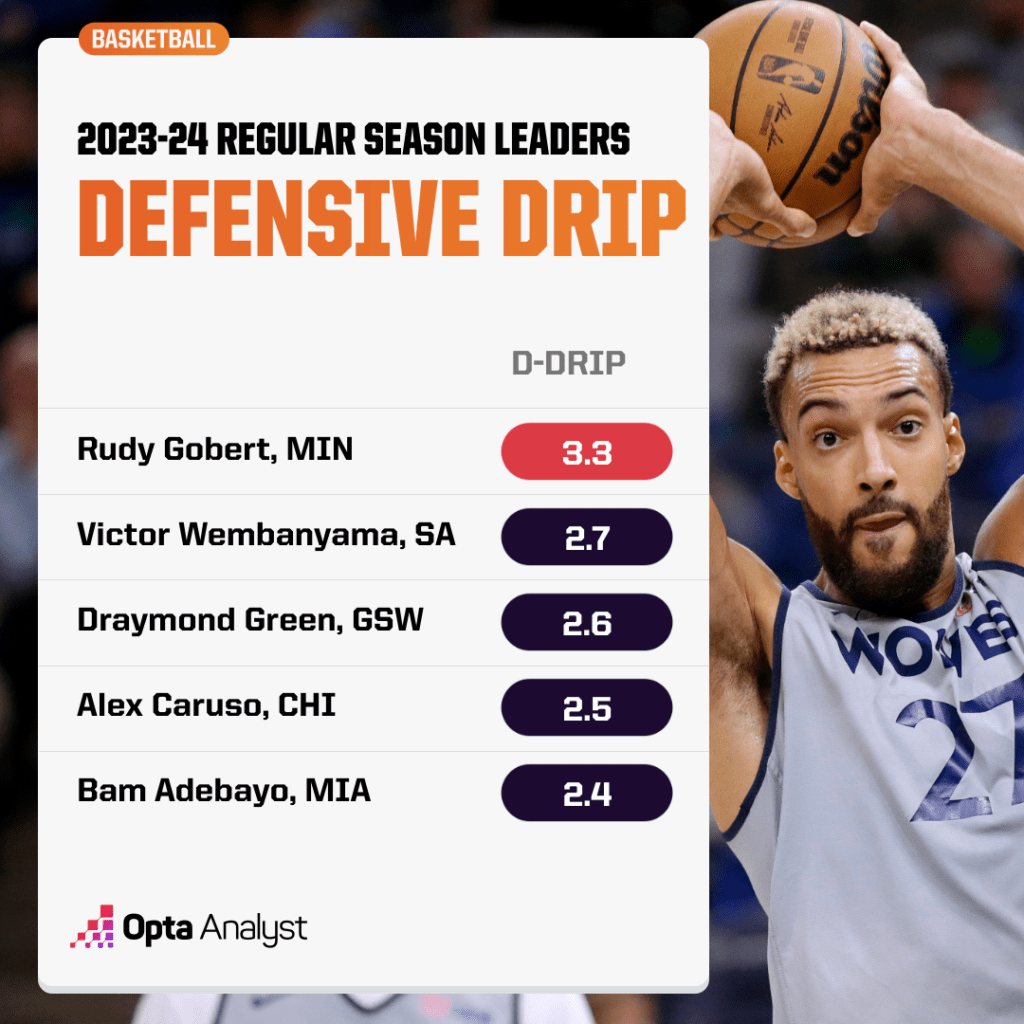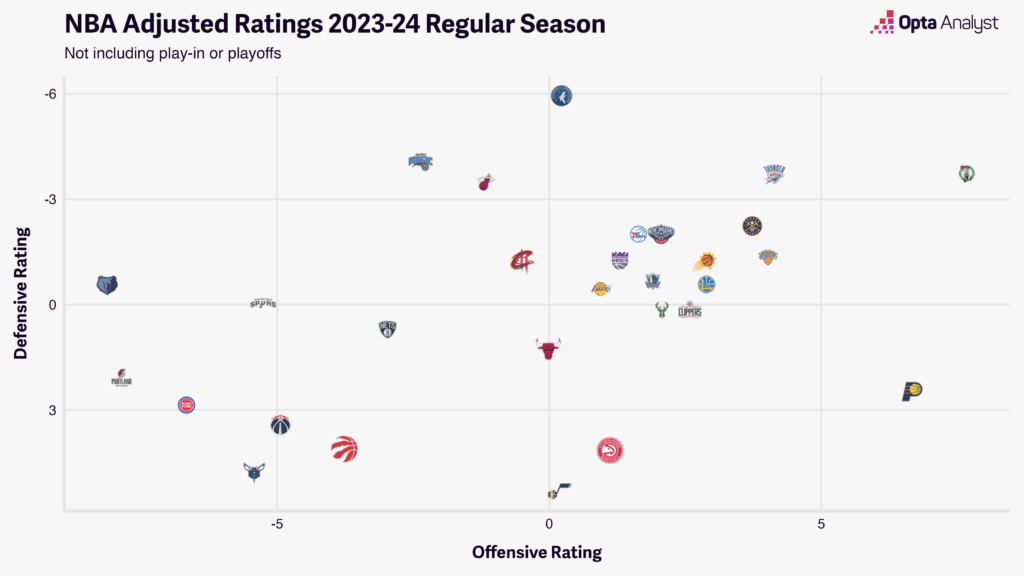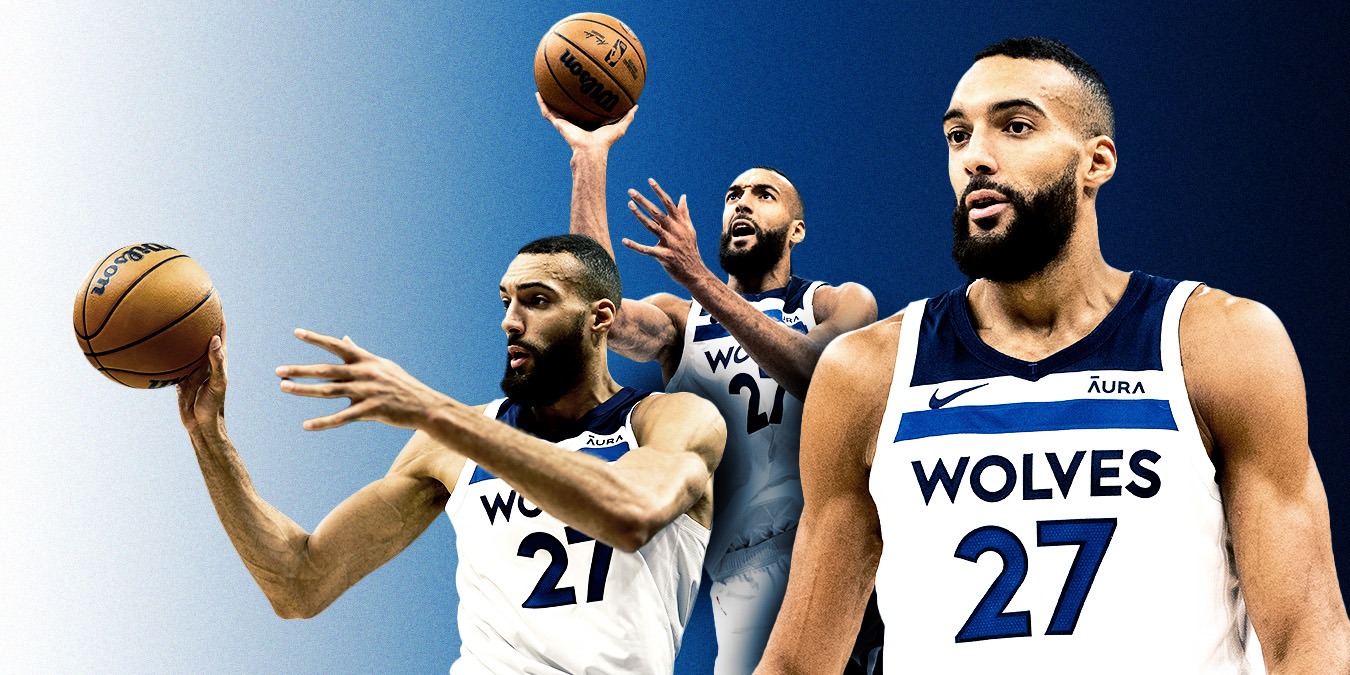Rudy Gobert has never won a title, and his teams’ failures have been used against him. But he’s averaged 16.0 points and 12.5 rebounds, and put up a plus/minus of 15.5 to help the Minnesota Timberwolves take a 2-0 lead over the Phoenix Suns.
The playoffs are kind of like a double-edged sword.
If you’re in the postseason, you always have a chance to take home the big prize. But if you’re one of the stars and your team falls short, people will blame you for it regardless of whether or not it’s your fault.
Rudy Gobert is a three-time (maybe soon to be four-time) NBA Defensive Player of the Year (DPOY) and arguably the best paint protector of this century. He also had the league’s best defensive DRIP (D-DRIP) and ranked 15th in overall DRIP during the regular season.

Heading into this postseason, Gobert has played 54 playoff games in his career. Unfortunately, since he’s never won a championship, fans/pundits have weaponized his experiences to create narratives about him that are sorely lacking in context.
However, Gobert appears to be using these playoffs to quiet those critics. He’s averaged 16.0 points on 71.4% shooting and 12.5 rebounds, and put up a plus/minus of 15.5 to help the Minnesota Timberwolves take a 2-0 lead over the Phoenix Suns.
Let’s get into how he’s going about that – and killing one false narrative at a time.
Myth: Drop coverage is great in the regular season, but it gets exposed in the playoffs.
As a refresher, drop coverage is a pick-and-roll ball-screen coverage in which the player defending the screen sinks way below the screen to stay near the paint. This tactic is usually employed by titanic rim guardians (like Gobert).
The benefits of drop are simple. By sinking back into the paint, the screen defender can protect against the drive and the roll. It’s the ultimate way to safeguard the interior.
On the flip side, the drawbacks are a bit misunderstood. In theory, playing drop coverage leaves you susceptible to pull-up jumpers, since all the ball handler technically has to do is dribble around the screen to unlock a pocket of open space to flow into a shot. This is problematic because, in the playoffs, you tend to come across a lot of good pull-up shooters.
But that tradeoffs can always be mitigated through effort. And the way to diminish the negative aspects of drop coverage is through great screen navigation.
When he played for the Utah Jazz, Gobert was straddled with lackluster perimeter defense. With the Timberwolves, Gobert is flanked by a cavalcade of elite wing-stoppers (hence their standing as one of the best defenses of the last 40 years).

With their star trio of Kevin Durant, Devin Booker and Bradley Beal, the Suns should be uniquely equipped to exploit drop coverage with their pull-up powers.
But because Gobert is playing on a team that is tailored to his strengths/weaknesses (aka has strong screen navigators), that just hasn’t happened (see the clip below).
As was the case in the play above, Jaden McDaniels (along with Nickeil Alexander-Walker and Anthony Edwards) has done a great job of nullifying the advantages traditionally created when Gobert stations himself in drop.
That means that Gobert can continue his dominant reign of paint protection (the Suns are 12th out of the 16 playoff teams in points in the paint per 100 possessions so far) without conceding a bevy of high-volume jumpers.
Myth: Gobert is a one-trick pony.
Gobert’s naysayers will tell you that not only is his precious drop coverage a playoff no-no but that he also can’t resort to a different tactic when his favorite parlor trick has lost its luster.
The best playoff defenders – like Bam Adebayo and Anthony Davis – can effortlessly toggle between all the various coverages. They can be in a drop in one possession, before transitioning to a blitz in the next possession, then a zone the following one.
Gobert is such an outstanding drop defender that you don’t really want him in any other coverage. It’s like asking Mariano Rivera to come into a game in the seventh inning. He can do it, but why would you want him to?
Gobert is the same way. He can execute other coverages. It just doesn’t usually make sense for him to. And against the Suns, Gobert is demonstrating his defensive range.
Through two games, we’ve already seen him in a show/hedge scheme (first clip in the montage below), we’ve seen him switch screens (second clip), we’ve seen him veerback switch (third), and we’ve witnessed him operate in a zone (fourth).
(Sidebar No. 1: The first play in the montage above was a make, but when you are looking at individual plays, every good analyst – pun intended – knows that it’s more about the process than the results.)
So, if Phoenix ever does “figure out” Minnesota’s drop coverage, Gobert can turn to the myriad of other moves he has in his defensive bag.
Myth: Gobert can’t guard on the perimeter.
This is another one of those “why would you even want him to do that?” type of situations. Gobert is over 7-feet tall with a damn near 7-foot-9 wingspan. Why do you want someone built like that anywhere other than the paint?
Anyway, back in 2021 (when all these narratives gained popularity), the Los Angeles Clippers “exposed” Gobert’s perimeter defense by playing a true 5-out lineup.
(Sidebar No. 2: A “true” 5-out lineup is one where all five players are a credible threat from the 3-point line.)
The quotation marks around the word “exposed” were placed there, you guessed it, because that’s not what really happened.
The truth is that by playing five perimeter players at once, Gobert was forced away from the paint. Then, one of the Clippers’ ball handlers would drive on one of the Jazz’s poor perimeter defenders, Gobert would have to make a long rotation over to avoid the easy layup, and it would lead to an easy kick out 3 for Los Angeles. Like this:
If you watch that clip carefully, you’ll see that the culprit of that break down was Jordan Clarkson (who let Reggie Jackson beat him on the perimeter), not Gobert. Gobert is a great defender, maybe the best in the league, but he can’t guard an entire team by himself.
We’ve already established that his perimeter partners in Minnesota are a lot better at their jobs (five players with a plus-1.0 D-DRIP or better in 2023-24) than the ones that were employed by the Jazz. So, occurrences like the one highlighted in the play above are few and far between.
When he is challenged on the perimeter, Gobert moves his feet pretty well for a guy his size. For instance, in Game 2, there was a sequence (the play below) when Beal tried driving right at Gobert. In that possession, not only did Gobert deter Beal from taking a shot at the rim, but he also stayed with him on a veerback switch and authored a premiere isolation shutdown.
Gobert’s defense is not an issue. But what about the other end of the court?
Myth: Gobert isn’t a good enough offensive player to hold up in the playoffs.
The reason the Clippers were able to trot out 5-out lineups against Gobert and his Jazz isn’t because it revealed some defensive shortcomings. Rather, it was because Gobert couldn’t make Los Angeles pay for its smaller lineup on the other end of the court.
To understand this phenomenon, look at Nikola Jokic. Teams could put up some sizable offensive numbers against the Denver Nuggets and Jokic if they played a 5-out lineup against them. But they can’t do it because Jokic would put up even bigger numbers against their smaller defense (this is a big reason why traditional bigs are coming back into style).
In the past, Gobert hasn’t shown the aptitude to punish defenses for going small on him. Has that changed this go around? That’s the plot twist… We don’t know the answer to that question yet!
The Suns have the personnel to play a small-ball lineup against him (with Durant at the 5). However, Phoenix hasn’t turned to it all that often to this point in the series (Durant has only played roughly nine minutes at center through two games, per Basketball Reference).
Will one of Phoenix’s Game 3 adjustments involve more 5-out lineups against Gobert? Only time will tell. If the Suns do decide to go that route, it will be up to Gobert to burn them for testing him (with mismatch post-ups, rim runs and offensive rebounds).
Is Gobert capable of that? I’m not entirely sure, but considering he’s already dispelled every other major myth about him this postseason, I wouldn’t bet against him.
Check out our MLB, NBA and NFL coverage. Follow us on X and Instagram for more!
